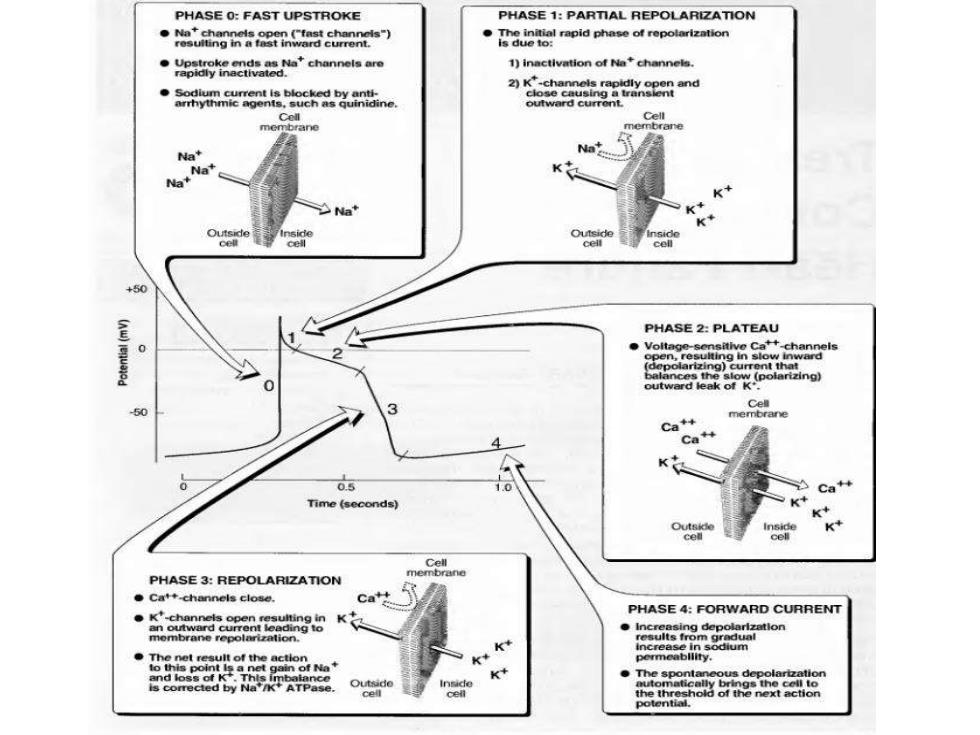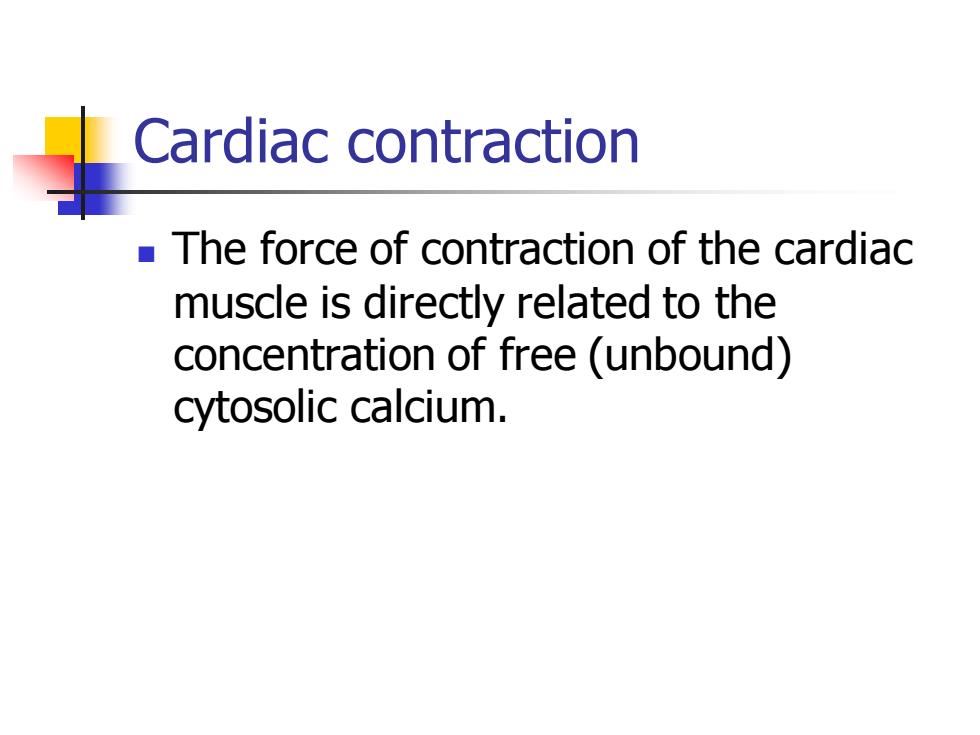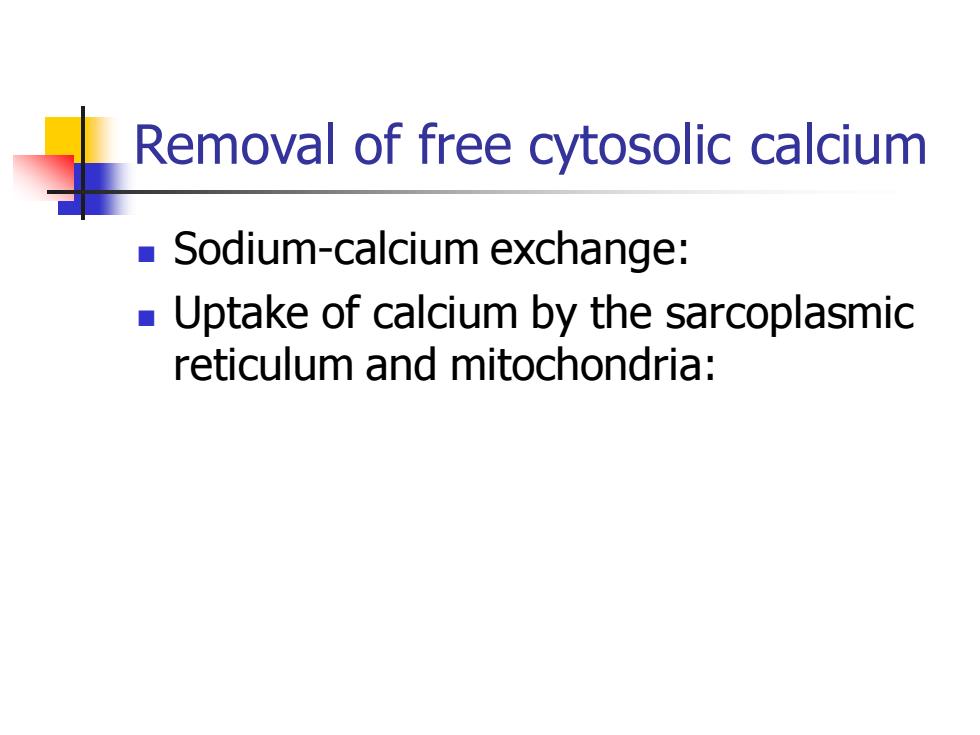
PHASE 0:FAST UPSTROKE PHASE 1:PARTIAL REPOLARIZATION ·to8am) rapid phase of repolarization ·ae产channels are 1)inactivation of Nachannels. ·mec2 uiniine Cell Na+ Na +50 PHASE 2:PLATEAU Ca++ Ca+ Ca+ Time (seconds) PHASE 3:REPOLARIZATION ●Cat+-channels close. Ca PHASE 4:FORWARD CURRENT ·99C8o sodium K K potential

Cardiac contraction The force of contraction of the cardiac muscle is directly related to the concentration of free (unbound) cytosolic calcium
Cardiac contraction ◼ The force of contraction of the cardiac muscle is directly related to the concentration of free (unbound) cytosolic calcium

Sources of free intracellulan calcium The first is from outside the cell,where opening of voltage-sensitive calcium channels causes an immediate rise in free cytosolic calcium. -The second source is the release of calcium from the sarcoplasmic reticulum and mitochondria,which further increases the cytosolic level of calcium
Sources of free intracellular calcium ◼ The first is from outside the cell, where opening of voltage-sensitive calcium channels causes an immediate rise in free cytosolic calcium. ◼ The second source is the release of calcium from the sarcoplasmic reticulum and mitochondria, which further increases the cytosolic level of calcium

Removal of free cytosolic calcium If free cytosolic calcium levels were to remain high,the cardiac muscle would be in a constant state of contraction, rather than showing a periodic contraction.Mechanisms of removal include two alternatives
Removal of free cytosolic calcium ◼ If free cytosolic calcium levels were to remain high, the cardiac muscle would be in a constant state of contraction, rather than showing a periodic contraction. Mechanisms of removal include two alternatives

Removal of free cytosolic calcium Sodium-calcium exchange: Uptake of calcium by the sarcoplasmic reticulum and mitochondria:
Removal of free cytosolic calcium ◼ Sodium-calcium exchange: ◼ Uptake of calcium by the sarcoplasmic reticulum and mitochondria: